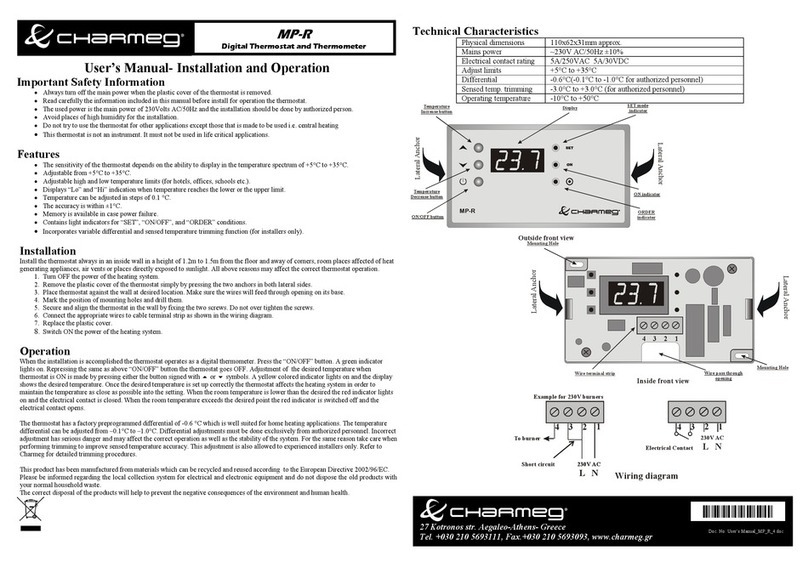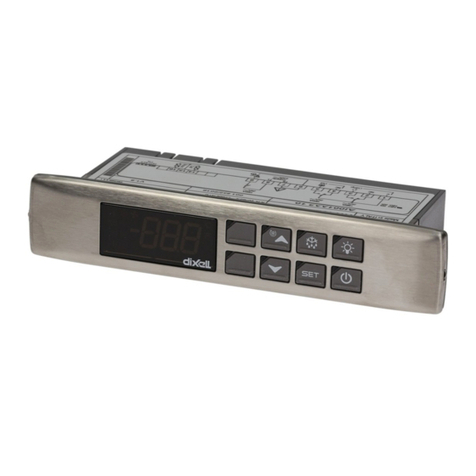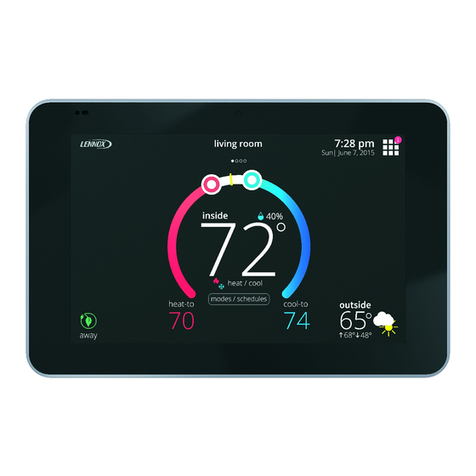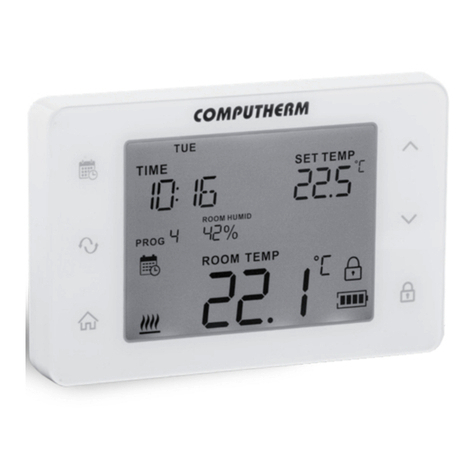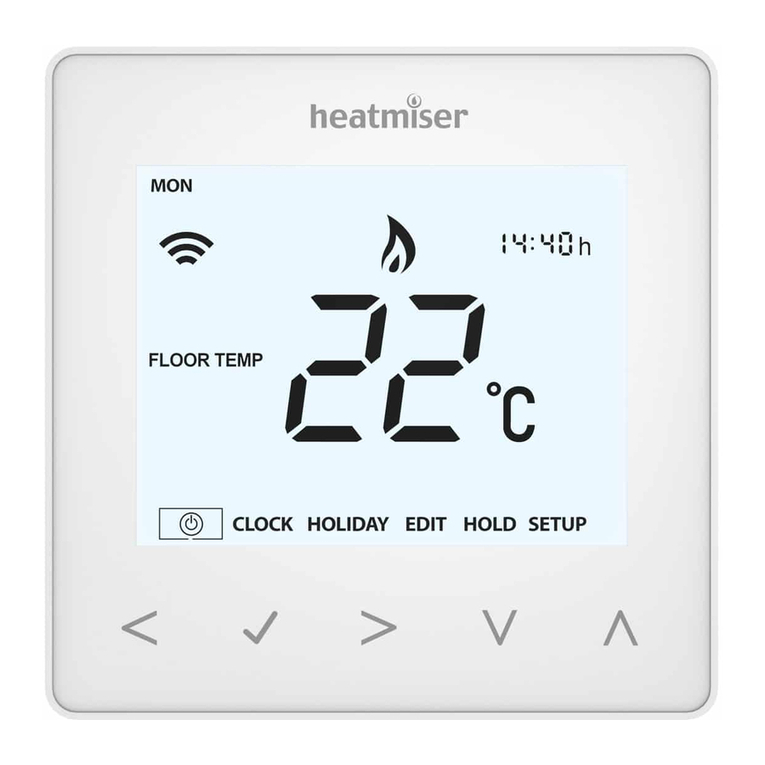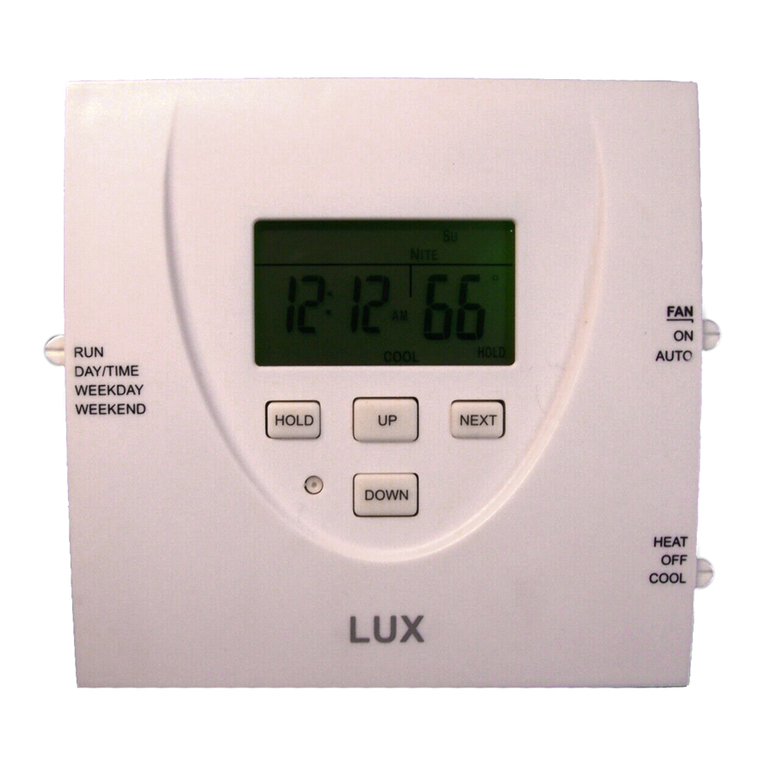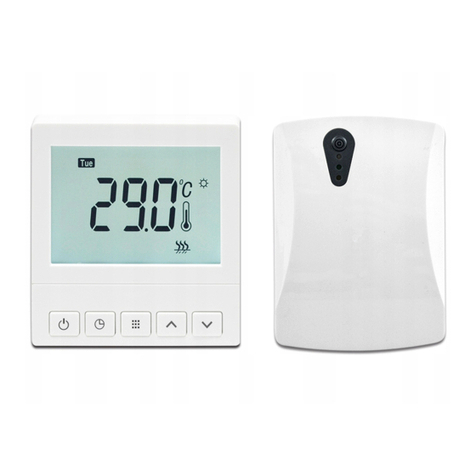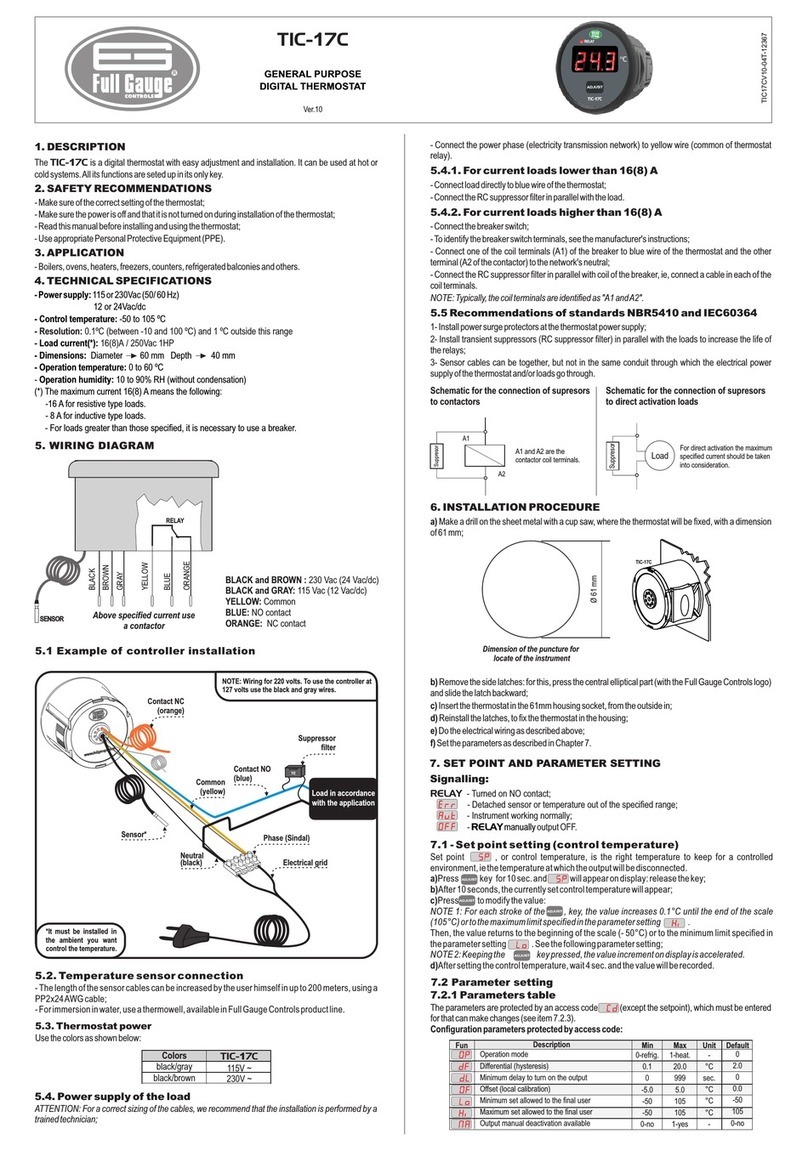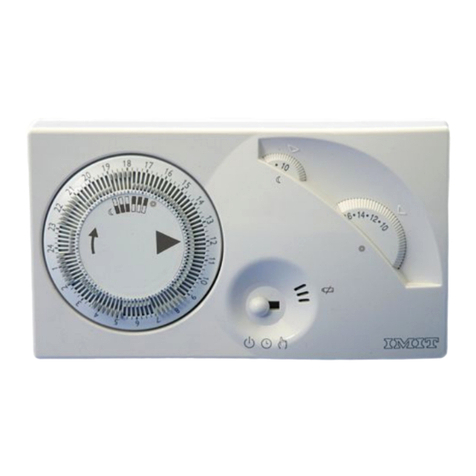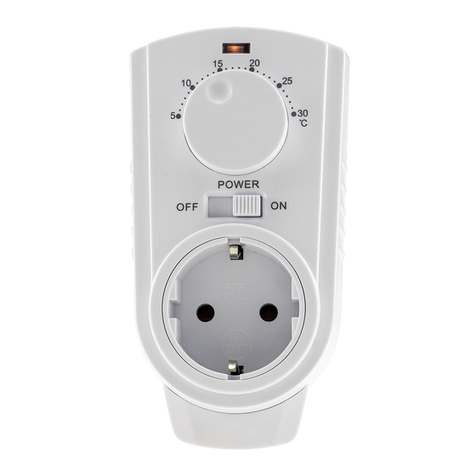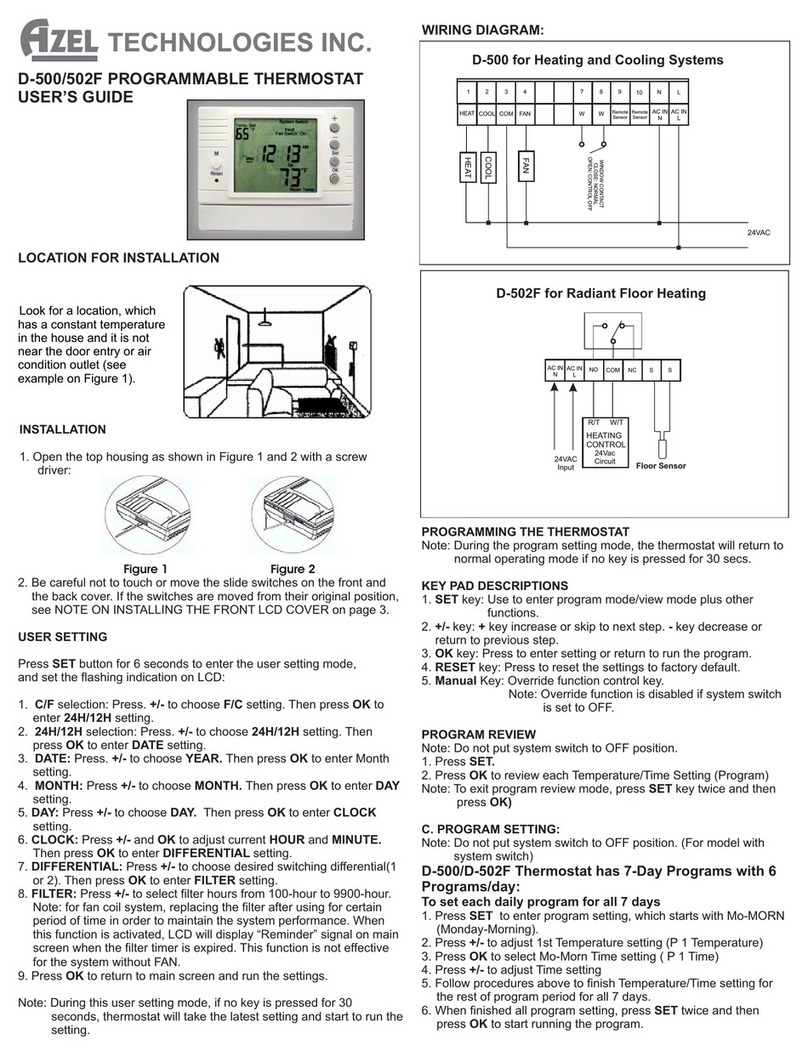
UM0277 Functional description
7/32
The linear temperature information is then simply compared to the temperature order.
TEMP1 is the upper limit of the Hysteresis cycle. It is equal to the temperature order plus a
threshold value (Temperature Hysteresis divided by 2). TEMP2 is equal to the same
temperature order minus this threshold. The compressor is switched on if the detected
temperature is above TEMP1, and switched off when this temperature becomes lower than
TEMP2.
The temperature order can be set to low, medium or high levels using the GUI software or
using push button PB1 on the board. Moreover, the Hysteresis value can only be changed
using the GUI software. For more information, see Section 3.5.1: Temperature control.
2.2.2 Compressor control
An ACST6-7ST AC switch (refer to mark Q1 in Appendix C) is used to turn on and off the
compressor according to the evaporator temperature detected by the NTC thermistor. Note
that such compressor motors usually present an auxiliary winding that only works during the
first seconds of operation in order to apply a higher torque at start-up. A PTC thermal
resistor is used to switch off this winding after start-up. In the STEVAL-IHT001V1 thermostat
kit, this PTC is not replaced by a TRIAC as proposed on our previous THERM01EVAL kit
(refer to AN1354).
2.2.3 Light bulb and buzzer operation control
A light bulb is driven by the ACS102-6TA AC switch (refer to mark Q3 in Appendix C). This
device is ON or OFF when the “Door” switch (J12) is opened or closed respectively. Instead
of using the switch placed on the board (J12), one can connect an external switch using the
“Door” connector (J13).
Note that if the fridge door or the “Door switch” is in “open” position more than one minute,
the buzzer will ring and the LEDs will flash. The buzzer can be stopped by pressing the
“temp selection” button or using the GUI software (refer to the Help menu of the GUI). When
the door is open, the temperature order can only be changed using the GUI software.
Note that a resistor (R1) has been added in series with ACS102-6TA AC switch (Q3).
Indeed, at the end of the lamp lifetime, the filament breaks and the overall filament can be
short-circuited by the flashover resulting in a load current that is no longer limited. This
current can exceed the i².t capability of the ACS and destroy it (refer to AN1172). To avoid
destroying the ACS102 switch at each lamp flashover, a power resistor is added in series
with the light. This resistor (refer to the Appendix C) is rated in order to limit the ACS current
to its ITSM value (10 A for a 10 ms half sinus conduction). In this case, a 33Ω1/2 W resistor
is sufficient.
2.2.4 Defrost resistor (or fan) control
The defrost resistor is driven by the ACS110-7SB2 AC switch (refer to mark Q2 in Appendix
C). This device is ON following the “Defrost activation delay” parameter time defined using
the GUI software. This time is compared to the sum of Q1 TRIAC ON times. When this sum
is higher than the “Defrost activation delay”, Q2 TRIAC is switched ON (Figure 4).
But the software (MCU) waits for the next compressor conduction cycle before turning on
the Defrost. Then, the Defrost is switched on when the evaporator temperature is the higher
value. This helps reduce power consumption and improve appliance efficiency. Switch Q2
remains on during the “Defrost duration” parameter defined on the GUI software.
